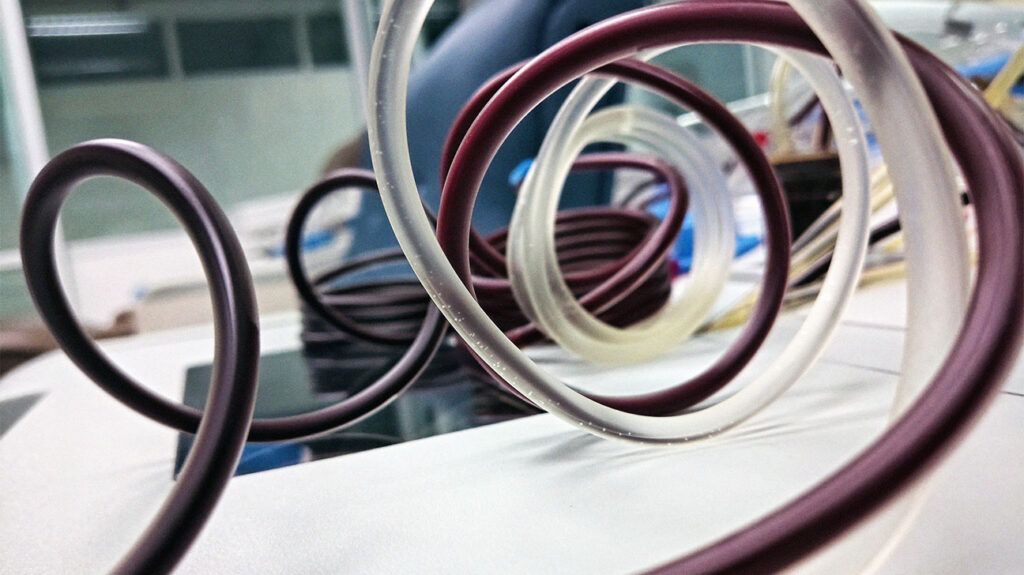Thrombocytopenia and hemophilia are two conditions that can affect the body’s ability to form blood clots. Although they have similar symptoms, they have different causes and treatments.
When a person has damaged blood vessels, they can bleed. Blood cells, called platelets, usually help form blood clots, which stop the bleeding. If a person has a problem with their platelets, they may not be able to form blood clots properly. This can cause bleeding both externally and internally.
Thrombocytopenia is a condition that causes a person to have low levels of platelets in their blood. This means their blood does not form clots as quickly.
Hemophilia also causes blood clots to form slowly. However, it does this by affecting the clotting factor proteins that help blood clots form.
Read on to learn more about the differences between thrombocytopenia and hemophilia, including how they affect blood clotting and their treatment options.

Although thrombocytopenia and hemophilia cause similar symptoms, they are two different conditions.
Thrombocytopenia occurs when a person has a platelet count lower than
Hemophilia generally affects males and rarely affects females. Thrombocytopenia does not affect more of one sex than another.
There are
The severity of a person’s hemophilia can depend on how much clotting factor they have. The less clotting factor in their blood, the more severe their symptoms.
Thrombocytopenia affects the number of platelets a person has. If a person has
No, neither hemophilia nor thrombocytopenia can cause the other condition. However,
A review from 2017 noted that some people who have hemophilia may also have reduced platelet activity. As the platelets may not function normally, this could contribute to problems with clot formation. However, the author notes limited research currently, and it requires further study.
Hemophilia is
Females have two X chromosomes and males have one X and one Y chromosome. This is why males are
A person can
Thrombocytopenia may occur as a result of the following factors:
- exposure to toxic chemicals
- drinking too much alcohol, which can cause platelet levels to drop temporarily
- certain medications
- aplastic anemia, a rare blood disorder
- autoimmune diseases, such as lupus
- cancers, such as leukemia or lymphoma
- conditions that cause blood clots, such as thrombotic thrombocytopenic purpura (TTP)
- infections, which can temporarily reduce platelet levels
- having a larger than normal spleen, which may store too many platelets
Hemophilia and thrombocytopenia share certain symptoms while others differ. The following table shows some common symptoms of both conditions.
| Symptoms | Hemophilia | Thrombocytopenia |
|---|---|---|
| excessive bleeding | yes | yes |
| joint bleeding | yes | no |
| enlarged spleen | no | yes |
| small, red, flat spots under the skin | no | yes |
| bruising | yes | yes |
| bleeding from the gums | yes | yes |
| nosebleeds | yes | yes |
| heavy menstruation | yes | yes |
| blood in the urine or stool | yes | yes |
Different treatment options are available for hemophilia and thrombocytopenia.
Treatments for hemophilia
Doctors treat hemophilia by replacing the missing clotting factor in a person’s blood. This involves a healthcare professional injecting a person with clotting factor concentrates.
If a person has severe hemophilia, they may need to inject themselves with the clotting factor
A doctor may prescribe
Treatments for thrombocytopenia
A person who has mild thrombocytopenia
Treatments for symptomatic thrombocytopenia may depend on the cause of the condition. By treating the underlying cause, a doctor can help reduce a person’s symptoms.
Medications
If a person is taking medications that cause thrombocytopenia, a doctor may change it for another.
A doctor may prescribe a person immunosuppressants if their immune system is destroying their platelets.
Other potential medications a doctor may prescribe to treat thrombocytopenia include corticosteroids, eltrombopag, or romiplostim. These medications may help improve platelet counts.
Procedures
A person may require a transfusion or splenectomy if medications do not help their symptoms.
A blood or platelet transfusion can treat a person who is bleeding heavily or has a high risk of bleeding. It involves a healthcare professional inserting an intravenous (IV) line into a person’s vein. The person then receives blood or platelets into their vein.
A splenectomy is a surgery to remove the spleen. If a person’s spleen is retaining too many platelets, a splenectomy can help improve platelet levels.
Hemophilia and thrombocytopenia are both conditions that affect how a person’s blood clots. Hemophilia occurs due to a lack of effective clotting proteins known as clotting factors. Thrombocytopenia occurs due to a low number of platelets, which are a type of blood cell that helps form blood clots.
Although they have similar symptoms, they are two different conditions. A person should consult a doctor if they experience symptoms of either condition, such as excessive bleeding, easy bruising, and blood being present in the stool or urine.
